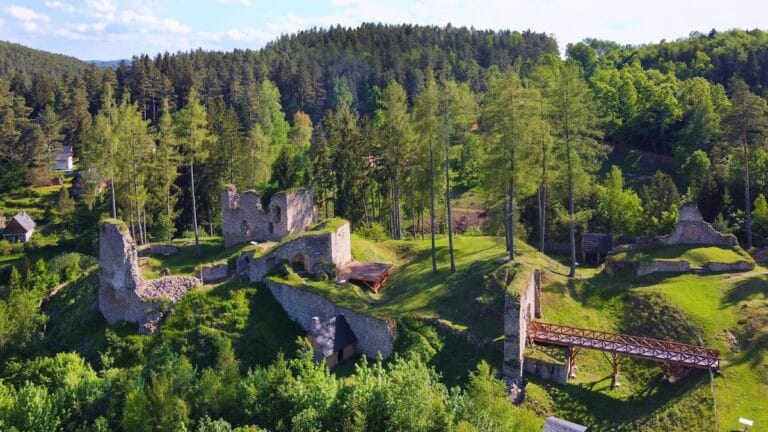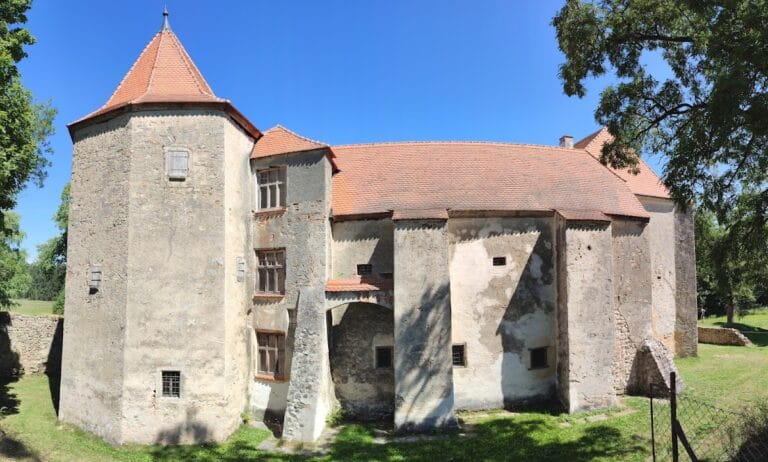Sokolčí Castle: A Medieval Bohemian Noble Residence in the Czech Republic
Visitor Information
Google Rating: 4.5
Popularity: Very Low
Google Maps: View on Google Maps
Official Website: turistickamapa.cz
Country: Czechia
Civilization: Unclassified
Remains: Military
History
Sokolčí castle is located in the municipality of Benešov nad Černou in the modern Czech Republic. It was built by the medieval Bohemian nobility, whose activity shaped the region’s historical landscape.
Although several 15th-century documents mention Sokolčí, these sources are known forgeries. One such forged text falsely claimed that King Přemysl Otakar II confirmed ownership of the castle to Vok of Rožmberk in 1264, while another deed attributed a donation by King John of Luxembourg to the same noble family. The latter was verified as authentic by the abbot of Vyšší Brod in 1460, lending some credibility to the later lineage ties. Still, actual documentary evidence suggests that the castle itself was not constructed until after 1358.
The most likely founder was Jindřich of Velešín, who had just sold his share of nearby Velešín to his brother Beneš. The castle and the adjoining village of Benešov came under Beneš’s ownership before 1387, when he sold them to Ulrich I of Rožmberk. This transaction integrated Sokolčí into the broader Nové Hrady estate.
Sokolčí may have been strategically placed to oversee and protect merchants traveling through a local branch of the Linz trade route along the Černá (Schwarzau) valley. However, the Rožmberk family, which ultimately controlled the site, showed little interest in its upkeep. Over time, this neglect led to the castle falling into ruin, with records noting its dilapidated state as early as 1541.
In the 20th century, efforts to preserve Sokolčí began. Since either 1958 or 1963 depending on sources, the ruins have been formally protected as a cultural monument. Today, the site is also recognized as a point of interest along the historical Czech-Austrian trail known as Zemská cesta, connecting castles across the border.
Remains
Sokolčí was built as a modest noble residence featuring a “block disposition,” a style common during the relatively peaceful rule of the Luxembourg dynasty in Bohemia. This design favored comfort and representation, placing less emphasis on formidable defensive structures. The castle’s walls were relatively thin, and wooden elements played a crucial role in the construction of several buildings.
The overall layout included two main parts: an outer bailey and an elongated, roughly triangular inner core. The outer bailey was once encircled by an earthen rampart, complemented by a neck ditch and additional fortifications. Today, only a low embankment remains visible on the inside edge of the ditch. Archaeological traces reveal the footprint of a large building with a projecting section called a risalit within this outer area. The main entrance was positioned at the southern end of the ditch.
The inner core stood on a rocky promontory above the Černá stream, its boundaries marked by a rock-cut ditch. Entry was controlled through a gate tower that extended partially into the ditch. Adjacent to this gate tower on the southeastern corner stood a rectangular building, preserving only ruins. On the opposite side, in the northeast corner, vestiges of a rectangular residential tower survive. This tower connected to a palace along part of the northern defensive wall; notably, two cellar windows from this palace have endured.
While limited fragments of the walls defining the core remain, evidence suggests that a larger structure likely extended across the full width of the inner area, incorporating wooden elements in its design. The castle stood at about 580 meters above sea level within what is now the Soběnovská vrchovina natural park.
The rocky outcrop on which the castle sits has further significance as a climbing site, featuring numerous established routes. Nearby, on the opposite bank of the Černá river, natural shelters created by frost weathering form pseudokarst cave systems, including a prominent large cave directly facing the castle and a smaller one beneath the castle’s rocky base. These natural features further highlight the castle’s unique setting.










